
We sent our reporter to a shop in Nara where you can dress as a noble from the Nara period (AD 710-794) and even stroll around town in your costume!
Before Tokyo or Kyoto, Heijo-kyo, otherwise known as modern-day Nara, was the capital of Japanese civilization between approximately AD 710–794. And now, through the newly opened Shozoku Sanpo 710 [“Costume Walk 710”] shop located in the heart of Nara City, you can experience what it would have been like to dress as an aristocrat during those bygone days.
While kimono rental shops are quite common in Japan, it’s rare to find a place offering clothing characteristic of the Nara period of Japanese history, which is also known as Tenpyo clothing [天平衣装]. The term “Tenpyo” denotes the specific years between AD 729–749 under the reign of Emperor Shomu-tenno, which were also the years when the giant Buddha statue of the Todai-ji temple complex was nearing completion. Nowadays, “Tenpyo” can often be used interchangeably with “Nara period,” which is why clothing distinctive to the Nara period is referred to as Tenpyo clothing.
The people running Shozoku Sanpo 710 have thoroughly researched ancient Japanese clothing and faithfully recreated authentic garb based on contemporary literature and art from the Nara period. Our reporter Masami, whom we sent to check out the new store, was incredibly pleased with this particular style of dress as it was very easy to move around in, unlike the 12-layered junihitoe kimono worn by court ladies of the subsequent Heian period (AD 794-1185). Furthermore, as she notes, the shop offers a full line of choices for men, women, and children, so you can enjoy the experience with friends, your significant other, or your entire family to boot!
The shop is just a few minutes’ walk from Kintetsu Nara Station and is located on the first floor of the Kiratto Nara shopping center. As a sign of its authenticity, Shozoku Sanpo 710 is even endorsed as an official shop of the Ancient Nara Tenpyo Festival, which recreates the atmosphere of ancient Nara with a procession in period clothing and other traditional events, by the festival’s executive committee.
You can mix and match your costume from various pieces of clothing found within the shop. Take some time to choose the perfect colors that suit you from dozens of vivid hues. The staff at hand are also happy to assist you if you’re having trouble deciding on which colors will match you best. In fact, Masami had some trouble narrowing down the choices, but she eventually settled on an outfit composed of a pink top and a blue skirt.
At this point, you may be wondering about the total cost of this experience. The prices actually range depending on which services you want. If you’d like to simply dress up in the shop and take some pictures there, it’s 1,000 yen (US$8.26) for men, women, and children alike. If, however, you’d like to take a one-hour stroll around the city after dressing in your new-ancient garb, the cost is 2,500 yen ($20.65) for men and boys and 3,000 yen ($24.78) for women and girls. These prices are quite reasonable by our reporter’s estimates, so you can be sure to enjoy the experience without worrying about bankrupting your trip.
Although putting on a modern kimono can take a painfully long time, it took no more than a few minutes for our reporter to finish dressing in her costume. Even her hair, fashioned using a clip accessory to mimic the style of the Nara period, took only a short time to prepare, so she had plenty of time to enjoy sightseeing around the vicinity. The shop also lent her a sashiha, or a fan-shaped object which was used to conceal the faces of nobles, to take with her on her venture. Men are similarly lent a shaku, which is a type of ritual baton as seen in the photo below.
▼ This mystery male traveler with our reporter also looks quite dapper in his period clothing while posing next to Nara’s mascot Sento-kun.
Once she both looked and felt the part of a Nara period noble, it was time to explore the town. One of the great things about Nara is that pretty much anywhere you go is perfect for taking commemorative photos of your trip. Masami certainly took advantage of this fact by walking only two minutes from the shop to the ancient Kofuku-ji temple complex to get her first portraits of the day. Besides housing several treasures such as a priceless statue of an Asura [a Buddhist demigod/fighting demon], the complex is also the site of Sarusawa Pond, which was made infamous by the Legend of Uneme. This tragic story tells the tale of a court lady who became depressed after the emperor supposedly fell out of love with her and subsequently drowned herself in the pond.
▼ The best picture by the pond that visitors can probably get is to stand with the five-storied pagoda in the background.
If you have access to a car, our reporter also recommends taking an approximately 15-minute drive from the shop to pose in front of several reconstructed structures of Heijo Palace, also known as the Nara Imperial Palace. You can’t get much closer to the past while dressed in ancient clothing than by doing that!
On a final note, Masami cautions that Shozoku Sanpo 710 does NOT lend shoes for you to wear, so please come prepared with some kind of footwear that would be fairly inconspicuous with your outfit.
The opportunity to dress as a Nara period aristocrat is an unforgettable experience that everyone who’s visiting Japan’s ancient capital should take advantage of. Don’t miss this chance during your next trip to Nara!
Shop information
Name: Heijo-kyo Tenpyo-sai Official Shop Shozoku Sanpo 710 / 平城京天平祭Official Shop 装束散歩710
Address: 101 Kiratto Nara, 3-1 Hashimoto-cho, Nara-shi, Nara-ken
奈良県奈良市橋本町3の1 きらっ都奈良101
Hours: 11 a.m.-5 p.m.
Closed: Tuesdays
Official Twitter
All images © RocketNews24
[ Read in Japanese ]

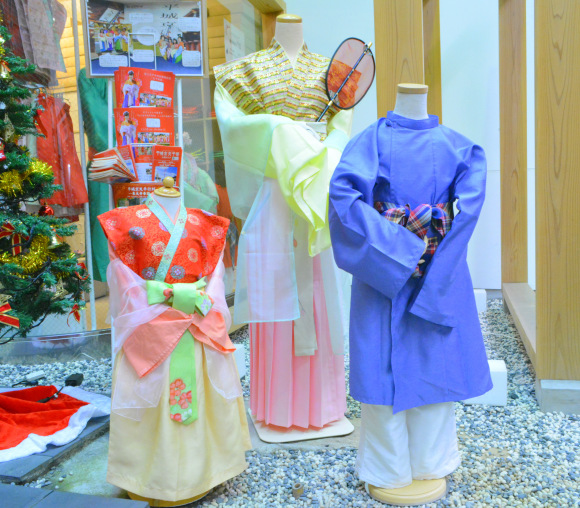

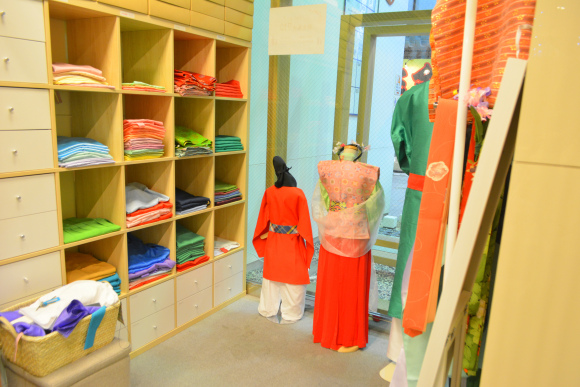

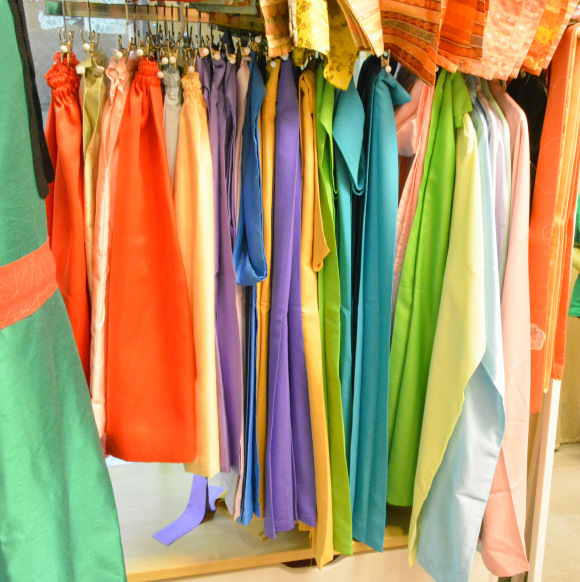
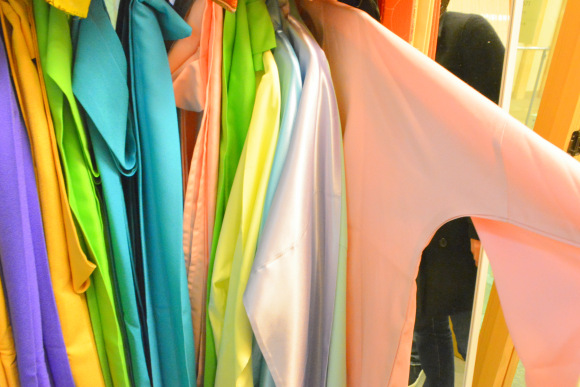


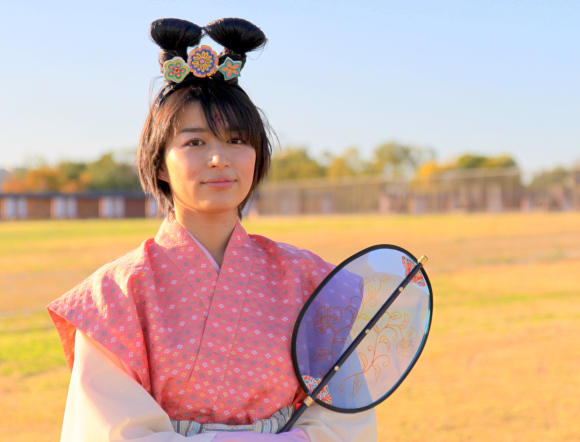
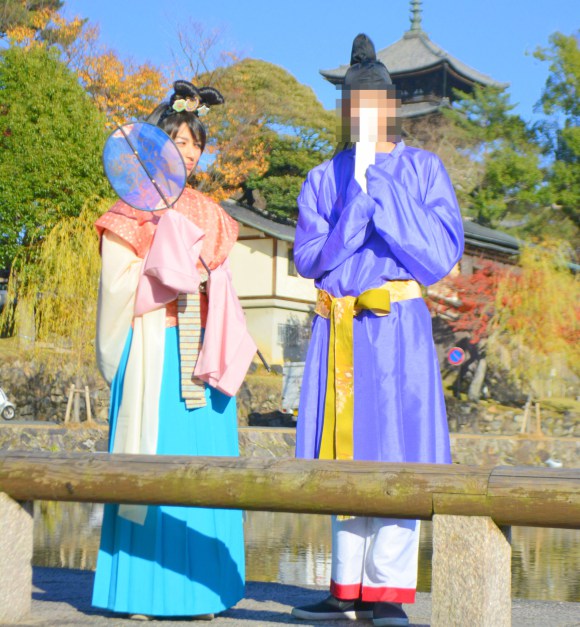

 Green tea ice cream from Nara combines everything we love about the city into one cute dessert
Green tea ice cream from Nara combines everything we love about the city into one cute dessert Appreciate thousands of years of Japanese beauty in surreal video from Nara University【Video】
Appreciate thousands of years of Japanese beauty in surreal video from Nara University【Video】 “Nara Quest”: The perfect parodying souvenirs from Nara Prefecture for all Dragon Quest fans
“Nara Quest”: The perfect parodying souvenirs from Nara Prefecture for all Dragon Quest fans Kimono rental shops in Kyoto and Nara offer Japanese-style hijabs to buy or rent
Kimono rental shops in Kyoto and Nara offer Japanese-style hijabs to buy or rent Thinking about moving to Nara? Here are eight things that may surprise you!
Thinking about moving to Nara? Here are eight things that may surprise you! Foreigner’s request for help in Tokyo makes us sad for the state of society
Foreigner’s request for help in Tokyo makes us sad for the state of society Japanese city loses residents’ personal data, which was on paper being transported on a windy day
Japanese city loses residents’ personal data, which was on paper being transported on a windy day Should you add tartar sauce to Japanese curry rice? CoCo Ichi makes diners an unusual offer
Should you add tartar sauce to Japanese curry rice? CoCo Ichi makes diners an unusual offer Seaside scenery, history, and so many desserts on Yokohama’s Akai Kutsu【Japan Loop Buses】
Seaside scenery, history, and so many desserts on Yokohama’s Akai Kutsu【Japan Loop Buses】 Ghibli Park now selling “Grilled Frogs” from food cart in Valley of Witches
Ghibli Park now selling “Grilled Frogs” from food cart in Valley of Witches Harajuku Station’s beautiful old wooden building is set to return, with a new complex around it
Harajuku Station’s beautiful old wooden building is set to return, with a new complex around it Japanese breast size study shows rapid growth in previously smallest-busted region of county
Japanese breast size study shows rapid growth in previously smallest-busted region of county Is Starbucks Japan’s new Gohobi Melon Frappuccino really the ultimate melon Frappuccino?
Is Starbucks Japan’s new Gohobi Melon Frappuccino really the ultimate melon Frappuccino? Historical figures get manga makeovers from artists of Spy x Family, My Hero Academia and more
Historical figures get manga makeovers from artists of Spy x Family, My Hero Academia and more McDonald’s new Happy Meals offer up cute and practical Sanrio lifestyle goods
McDonald’s new Happy Meals offer up cute and practical Sanrio lifestyle goods Japanese ramen restaurants under pressure from new yen banknotes
Japanese ramen restaurants under pressure from new yen banknotes French Fries Bread in Tokyo’s Shibuya becomes a hit on social media
French Fries Bread in Tokyo’s Shibuya becomes a hit on social media Studio Ghibli releases new action figures featuring Nausicaä of the Valley of the Wind characters
Studio Ghibli releases new action figures featuring Nausicaä of the Valley of the Wind characters New private rooms on Tokaido Shinkansen change the way we travel from Tokyo to Kyoto
New private rooms on Tokaido Shinkansen change the way we travel from Tokyo to Kyoto Red light district sushi restaurant in Tokyo shows us just how wrong we were about it
Red light district sushi restaurant in Tokyo shows us just how wrong we were about it Tokyo Tsukiji fish market site to be redeveloped with 50,000-seat stadium, hotel, shopping center
Tokyo Tsukiji fish market site to be redeveloped with 50,000-seat stadium, hotel, shopping center All-you-can-drink Starbucks and amazing views part of Tokyo’s new 170 meter-high sky lounge
All-you-can-drink Starbucks and amazing views part of Tokyo’s new 170 meter-high sky lounge Beautiful Ghibli sealing wax kits let you create accessories and elegant letter decorations【Pics】
Beautiful Ghibli sealing wax kits let you create accessories and elegant letter decorations【Pics】 Studio Ghibli releases Kiki’s Delivery Service chocolate cake pouches in Japan
Studio Ghibli releases Kiki’s Delivery Service chocolate cake pouches in Japan New definition of “Japanese whiskey” goes into effect to prevent fakes from fooling overseas buyers
New definition of “Japanese whiskey” goes into effect to prevent fakes from fooling overseas buyers Our Japanese reporter visits Costco in the U.S., finds super American and very Japanese things
Our Japanese reporter visits Costco in the U.S., finds super American and very Japanese things Studio Ghibli unveils Mother’s Day gift set that captures the love in My Neighbour Totoro
Studio Ghibli unveils Mother’s Day gift set that captures the love in My Neighbour Totoro More foreign tourists than ever before in history visited Japan last month
More foreign tourists than ever before in history visited Japan last month New Pokémon cakes let you eat your way through Pikachu and all the Eevee evolutions
New Pokémon cakes let you eat your way through Pikachu and all the Eevee evolutions Sales of Japan’s most convenient train ticket/shopping payment cards suspended indefinitely
Sales of Japan’s most convenient train ticket/shopping payment cards suspended indefinitely Sold-out Studio Ghibli desktop humidifiers are back so Totoro can help you through the dry season
Sold-out Studio Ghibli desktop humidifiers are back so Totoro can help you through the dry season Japanese government to make first change to romanization spelling rules since the 1950s
Japanese government to make first change to romanization spelling rules since the 1950s Ghibli founders Toshio Suzuki and Hayao Miyazaki contribute to Japanese whisky Totoro label design
Ghibli founders Toshio Suzuki and Hayao Miyazaki contribute to Japanese whisky Totoro label design Doraemon found buried at sea as scene from 1993 anime becomes real life【Photos】
Doraemon found buried at sea as scene from 1993 anime becomes real life【Photos】 Tokyo’s most famous Starbucks is closed
Tokyo’s most famous Starbucks is closed One Piece characters’ nationalities revealed, but fans have mixed opinions
One Piece characters’ nationalities revealed, but fans have mixed opinions We asked a Uniqlo employee what four things we should buy and their suggestions didn’t disappoint
We asked a Uniqlo employee what four things we should buy and their suggestions didn’t disappoint Princesses, fruits, and blacksmiths: Study reveals the 30 most unusual family names in Japan
Princesses, fruits, and blacksmiths: Study reveals the 30 most unusual family names in Japan Deer in Nara Park outnumber visitors, display baffling summer gathering behaviour
Deer in Nara Park outnumber visitors, display baffling summer gathering behaviour Fancy a stylish Starbucks picnic sheet to go along with your order? You can get one free in Japan
Fancy a stylish Starbucks picnic sheet to go along with your order? You can get one free in Japan Nara Park’s first baby deer of the year has been born, is totally adorable【Video】
Nara Park’s first baby deer of the year has been born, is totally adorable【Video】 Miss school field trips? Now adults can go on a “school trip” too with new plan at Nara hotel
Miss school field trips? Now adults can go on a “school trip” too with new plan at Nara hotel Nara hotel with hot spring baths by imperial palace site is a reason to remember the prefecture
Nara hotel with hot spring baths by imperial palace site is a reason to remember the prefecture Japanese hotel that hosted last four emperors offering rooms for fraction of their regular price
Japanese hotel that hosted last four emperors offering rooms for fraction of their regular price Amazing pics from Kyoto/Nara “bullet tour” show no matter how tight your schedule, you should go
Amazing pics from Kyoto/Nara “bullet tour” show no matter how tight your schedule, you should go Nara, Japanese city famous for its streets of tame deer, begins culling program within city
Nara, Japanese city famous for its streets of tame deer, begins culling program within city Deer in Nara Park mysteriously disappear during this year’s shikadamari season
Deer in Nara Park mysteriously disappear during this year’s shikadamari season Nara deer shikadamari mystery deepens as tourists return to Nara park
Nara deer shikadamari mystery deepens as tourists return to Nara park Afro Buddha, usually only displayed one day a year, gets rare extended viewing until mid-October
Afro Buddha, usually only displayed one day a year, gets rare extended viewing until mid-October Adorable cat sandals from Japan welcome new arrivals to their feline footwear litter【Photos】
Adorable cat sandals from Japan welcome new arrivals to their feline footwear litter【Photos】 Nara unveils new vending machines that sell deer crackers
Nara unveils new vending machines that sell deer crackers Wanna win a Nintendo Switch? You can with this gigantic gacha capsule machine in Nara【Photos】
Wanna win a Nintendo Switch? You can with this gigantic gacha capsule machine in Nara【Photos】 Why isn’t there more deer poo in Nara Park? This very strange museum has the answer【Photos】
Why isn’t there more deer poo in Nara Park? This very strange museum has the answer【Photos】 Kyoto tourist crowds disappearing due to coronavirus outbreak, creating travel crisis/opportunity
Kyoto tourist crowds disappearing due to coronavirus outbreak, creating travel crisis/opportunity
Leave a Reply